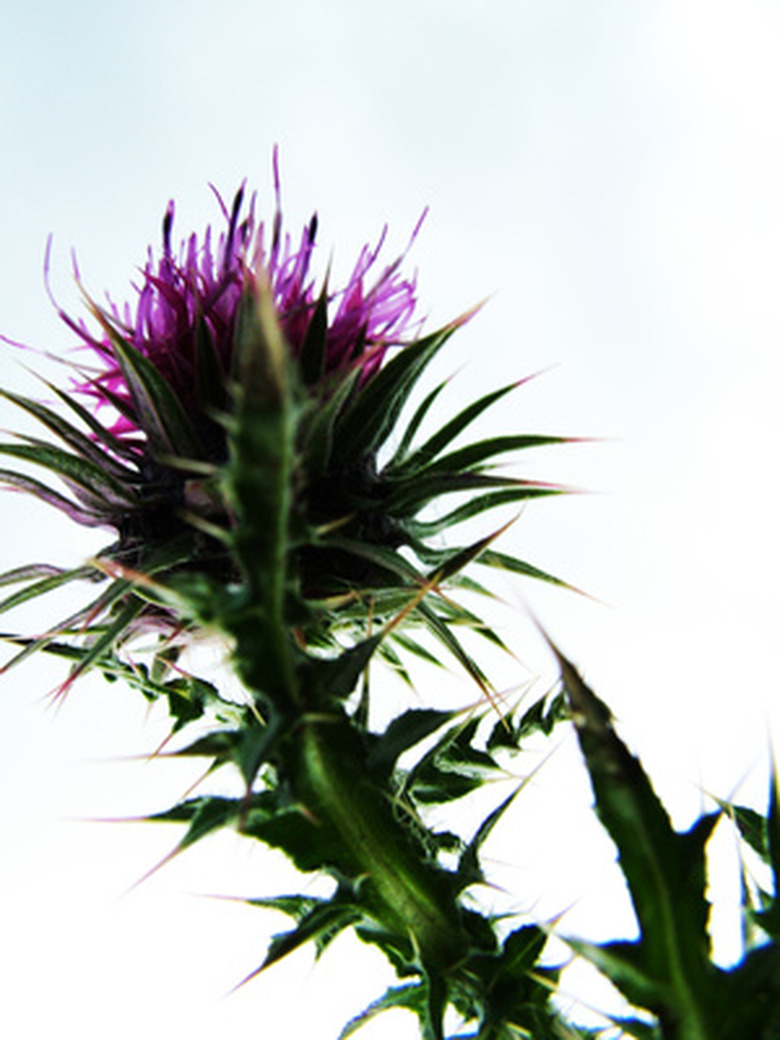Thistle Varieties
Thistles are flowering plants with spiny leaves. They are typically regarded as weeds because their spines can cause injury and there are many different types of thistle plants that grow in the United States. Learning about the different varieties of thistle helps you decide what to do if you see these weeds in your garden.
Bull Thistle
The bull thistle has elongated leaves which are each tipped with a stiff spine. There are prickly hairs on the upper and lower surface of the bull thistle leaves. The bull thistle produces round flowers that may be pink, purple or white. The flowers further have spines set in the base of the flower head and very fine, thin hairs interspersed with the petals. Bull thistle is commonly found along roadsides and in pastures.
- Thistles are flowering plants with spiny leaves.
- The bull thistle has elongated leaves which are each tipped with a stiff spine.
Tall Thistle
Tall thistle may have leaves that are straight or lobed, and the leaf margins have small spines that point towards the leaf's tip. The leaves are dark green and slick on their upper surface, while the lower surface has a dense covering of stiff hairs that give it a cottony look. The flowers range from pink to purple, with some subspecies producing white flowers. It is common in the northern states.
Scotch Thistle
Scotch thistle has large, lobed leaves and it is easily distinguished by a dense covering of stiff hairs all over the foliage which give it a grayish or bluish cast. The hairs cause it to look furry, to the point where it is also called cotton thistle. It produces both single flowers and clusters of reddish-purple flowers which are tipped with spines.
- Tall thistle may have leaves that are straight or lobed, and the leaf margins have small spines that point towards the leaf's tip.
Canada Thistle
Canada thistle has leaves with wavy lobes, and as the plant matures, the the lobes become more triangular in shape. The upper surface of the leave is smooth, while the lower surface may be covered with stiff hairs. It produces small pinkish-purple flowers.
Russian Thistle
Russian thistle produces thin leaves tipped with spines that are whitish-pink in color. As the season continues, the leaves turn bright red. During the first few months of the growing season, it is soft and suitable for eating by grazing animals but then it becomes rigid and spiny. It produces pale flowers that have a greenish or pinkish-white tinge.
- Canada thistle has leaves with wavy lobes, and as the plant matures, the the lobes become more triangular in shape.
